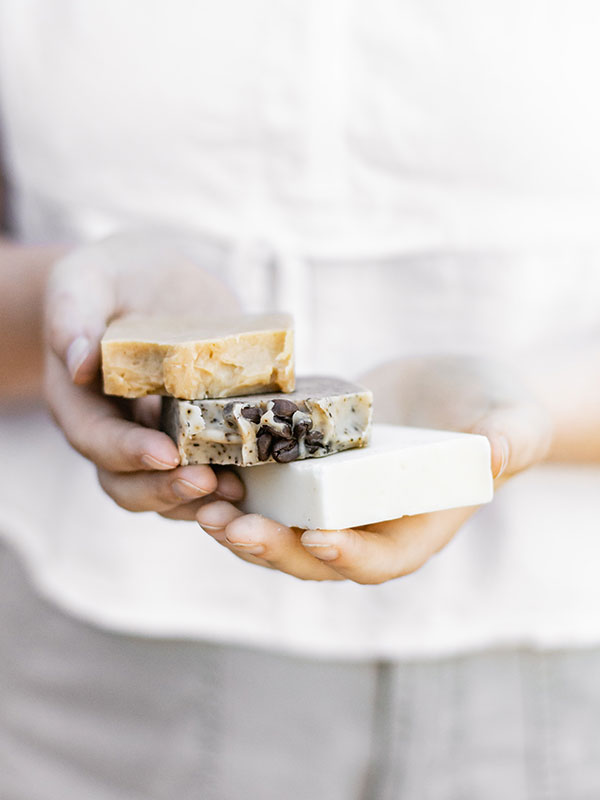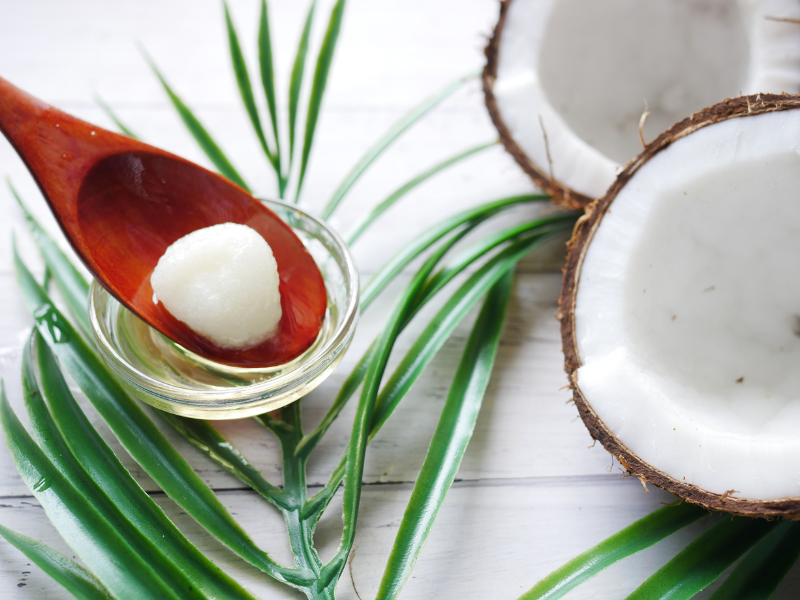If you pay attention to the composition of the product, you will find the label 'glycerin' in almost every product description. This label may be familiar to you as a description of the fat in a product that hydrates the skin. But what exactly is glycerin? Where does it come from? What are its benefits for your skin? Glycerin in cosmetics is the most common term and it is time to find out the truth about why we use it as a composition in cosmetic products at all.
What is glycerin?
Glycerin is an organic compound known as glycerol, and it is a clear, gelatinous liquid without the smell of sweet taste. It can be obtained by fermentation of sugar or synthetically - from propylene (it is a method of sugar fermentation), hydrolysis (decomposition of molecules of covalent complex chemical compounds in reaction with water), and from fat (plant or animal). When we apply it on the skin, we can feel a slight warmth. And this happens because glycerin is a humectant. That means glycerin attracts moisture and reduces moisture loss in the skin. When glycerin combines with moisture in the skin, an exothermic reaction occurs, so we feel warm when we apply it. It is good to know that glycerin is not toxic to the skin.
The secret in everything is glycerin molecules. Namely, glycerin is an alcohol and its molecules look like a small crown with three drops of alcohol on top and three carbons in the base that hold it all together. Therefore, with one drop of alcohol per carbon, glycerin can hold a lot of water.
Why is glycerin found in cosmetics?
Glycerin is known in cosmetics as a natural factor that gives the skin moisture (thus preventing moisture from disappearing). In addition, improves skin smoothness, respectively makes it soft. Therefore, it is compatible for any skin type and for all age groups, it is a means of regenerating hair and gives it hydration, and it is a means of oral care.
According to research from cosmetics factories, glycerin is the third most commonly reported ingredient in every cosmetic product, after water and perfume. (Research - Safety Assessment of Glycerin as Used in Cosmetics).
If we pay attention to some products, we can answer the question of what glycerin is used in products.
Shampoo - retains moisture in the hair, hydrates it. It is used as a shampoo thickening agent, thus the texture of the shampoo becomes thick and rich
Body lotions - hydrates the skin
Toothpaste - prevents the paste from being dry and helps the paste taste sweet
In addition to moisturizing properties, glycerin is considered useful for alleviating additional health problems, including irritation and skin closure. It is also a valuable ingredient in many pharmaceutical and nutritional preparations.
Where is glycerin found in cosmetic products?
There is almost no cosmetic product without glycerin. If you receive any product now and look at the ingredients you will find this ingredient. It is located in hair conditioners, skin care creams and sunscreens, rinse products (oral hygiene products), bath products, baby products, lotions, perfumes and even hair sprays, deodorants, shaving creams, soaps, etc. .

What are the labels of glycerin in cosmetic products?
When you read the composition of the product on the packaging, you can find glycerin under tags:
Glycerol, Glycerolum, Glicerol, Glyzerin, 1,2,3-Propantriol, Glycerinester, Pfl. Glycerin, Clycerin, Glycreth-26, Polyglycerol, Vegetable Glycerin
What are the benefits of glycerin?
In addition to hydrating and retaining moisture in the skin, glycerin has others advantages.
- Helps protect skin from irritation
- It helps in the care of dry skin, giving it softness and suppleness
- It firms the skin, makes it stronger and smoother
- Increases the penetration of other ingredients into the deeper layers of the skin
- Improves skin resilience and gives a youthful look
- It is involved in the activity of aquaporin on the skin surface (aquaporin - proteins that channel the flow of vital moisturizing substances on the skin surface)
- Prevents skin peeling
- Improves the structure and appearance of the skin
- Helps mature skin cells
- Improves skin elasticity
- It helps in healing the skin when we have wounds
- It can be used as a skin cleanser
What are the sources of glycerin?
Usually, glycerin is obtained from sources of animal fats and vegetable oils.
Animal fats
Glycerin from animal fats comes from animal triglycerides, a type of fat molecule commonly found in animal blood and is the main component adipose tissue of the animal. Each triglyceride molecule contains three fatty acid chains, all of which are linked to a glycerol base. During the preparation of the soap, the compounds that hold the fatty acids on the glycerol are broken down, giving the glycerin as a by-product.
The fat is mixed with water and heated to a medium to low temperature until it becomes thick. The mixture was then cooled overnight in the refrigerator. The hardened mixture can either be boiled to remove excess water or tightened to remove impurities then it can be used in soaps, lotions or hair products.
Vegetable oils
Fortunately, we can also find glycerin in plants. It is usually done from soybean oil, coconut and palm oil. Plant lipids are also typically stored as triglycerides. Plant triglycerides often differ from animal triglycerides because of their fatty acid chains; plant triglycerides usually contain unsaturated fatty acid chains.
Herbal glycerin is often used in beauty, because it is easily absorbed into the skin, which makes it easier for the skin to absorb the active ingredients in the product.
In order to know what we are putting on the skin, it is good to be informed about the ingredients of the product. With the 'glycerin' label on the packaging, we can't be sure what kind of glycerin it is. Therefore, it is safest to use vegan products, ie those that do not contain any animal ingredients.
Glycerin substitute
Vegetable glycerin, also known as glycerol or glycerine, is a clear liquid usually produced from soy, coconut or palm oil. It is odorless and has a slightly sweet taste with a syrup-like consistency. Vegetable glycerin is especially popular in the cosmetics industry, but it has several other uses as well. It can also provide health benefits, from skin health to better hydration and strengthening the gut.

What is vegetable glycerin?
Glycerin is a sugar alcohol obtained from animal products, plants or petroleum. Vegetable glycerin is a variant made from vegetable oils.
It is said to have been accidentally discovered more than two centuries ago by heating a mixture of olive oil and lead monoxide. But it only became economically and industrially significant in the late 1800s when it was first used to make dynamite. Vegetable glycerin is made by heating vegetable fats rich in triglycerides — such as palm, soybean and coconut oil — under pressure or together with a strong alkali, such as lye. This causes the glycerin to separate from the fatty acids and mix with water, forming an odorless, sweet-tasting, syrup-like liquid.
Where is vegetable glycerin used?
Vegetable glycerin is widely used in the food, cosmetic and pharmaceutical industries. For example, it is often added to foods to help mix oil and water-based ingredients, sweeten or moisten the final product. It can also be used to prevent ice crystals from forming in frozen foods, such as low-fat frozen yogurt, ice cream, and other desserts. Glycerin is a common ingredient in pharmaceutical drugs, including heart medications, cough medicines, and anesthetics. Additionally, you can find vegetable glycerin in toothpaste, as it helps prevent the toothpaste from drying out or hardening in the tube. Moreover, it is commonly added to soaps, candles, lotions, deodorants and make-up.
What are the benefits of herbal glycerin for the skin?
Plant glycerin is a humectant - it works by drawing water into the skin and retaining it, which is great for improving skin barrier function and skin health in general, Greenfield says. Steinmetz explains that it actually draws moisture from both the air and your skin, helping to increase hydration levels in two different ways. On top of that, it gives the skin a moist, supple feeling, making it look full and healthy, she points out.
So how is it different from other moisturizers, such as hyaluronic acid, the second most common? It comes down to their different chemical structures. “The chemical structure will ultimately determine how many water molecules it can attract and retain, which in turn determines how effective the ingredient is in hydrating the skin,” Greenfield explains. “Glycerin in particular has the ability to retain several water molecules at the same time, and because glycerin sticks strongly to itself, those water molecules don’t evaporate from the skin,” she adds. (Given this, it is worth noting that hyaluronic acid can retain more water than glycerin.)
What are the side effects of vegetable glycerin?
Of course, allergy to any ingredient is always possible, but any side effects are rare. Most generally tolerate it very well, including those with sensitive skin.
How to use vegetable glycerin and where to buy it?
Here's the thing: vegetable glycerin/glycerin is such a ubiquitous ingredient that there's a very good chance it's already in the moisturizer you're using, so don't go crazy looking for products with glycerin. Again, it will probably be in any lotion or cream. That said, if you want to maximize the effects, try applying any product with glycerin (or any moisturizer, for that matter) to skin that's slightly damp or in a humid environment; think of a steamy bathroom after a shower. This will give the ingredient more water to capture, ultimately making it more effective. Pure vegetable glycerin is also readily available online and you can easily add a few drops to almost any hair, skin or body product to increase the moisturizing benefits.
Source:
www.byrdie.com/what-is-vegetable-glycerin-5191132

